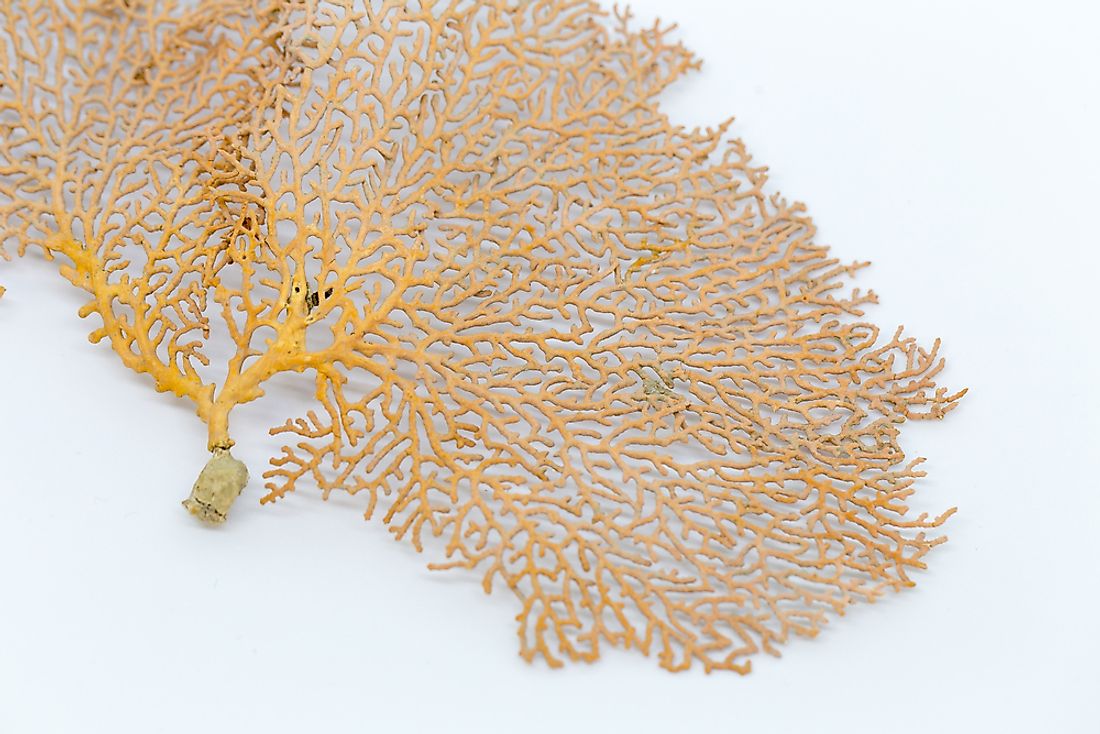What Are Cnidarians?

Cnidarians refer to a phylum of over 10,000 species of aquatic animals. The Cnidaria thrives in both marine and freshwater environment where it derives food and other survival inputs. The bodies of Cnidaria are symmetrically balanced and have tentacles. There are no respiratory organs. The cell layers remove carbon dioxide while absorbing oxygen from the water. The name Cnidarian is derived from a Greek word meaning to sting.
Distinguishing Features Of Cnidarians
All cnidarians have enhances cells called the cnidocytes which is used to capture food. Their body is covered by a mesoglea held by layers of epithelium. The mesoglea is just one cell thick, non-living and looks like jelly. Respiration and digestion takes place through one orifice and a body cavity. A Cnidarian can have either a swimming medusa or sessile polyps. At the mouth opening, there are tentacles that have small cnidocytes. All the body activities are coordinated by a network of nerves that are decentralized with minute receptors.
Scientific Classification Of Cnidarians
Cnidarians are divided into four classes. The first is Sessile Anthozoa which includes the sea pens, anemones, and the Corals. The second is the Scyphozoa class, also known as the swimming class. Examples include the true jellyfish. Cubozoa class is made of all cnidarians with box features such as the box jelly and sea wasps. Hydrozoa class is the latest classification mainly from the freshwater cnidarians such as the Portuguese man o’ war and hydra.
Reproduction
Some species of cnidarians reproduce sexually while others are asexual. The sexual system involves both the Medusa and polyp stages. During the breeding season, adults release sperms and ova into the water from their gonads. Once the larva is formed, it swims looking for a comfortable site where it will develope into a polyp. The process of strobilation follows where the newly formed cnidarians swim off and gradually matures. The process can be summarized in four stages namely the egg, larva, polyp growth, polyp strobilation, and Medusa which is the last stage.
In the asexual process, the adult splits into two with the offspring being a clone of the adult. Some species divide into two symmetrical parts whereas in others they produce a bud which matures to an offspring.
Habitat And Feeding
Most cnidarians live in shallow water due to their size, breeding habits, and feeding adaptation. However, a few classes such as the Hydrozoans are found in mid sea and some in fresh waters. A few Anthozoans such as the sea pens and sea fans thrive in deep, cold aquatic waters.
Cnidarians obtain food by either predation, filtration of food particles inside water or by absorbing organic food. Other sources of food include parasites, planktons, and even other sea animals much bigger than themselves. Once the food gets into the digestive system, enzymes are released from the gastroderm, which prepares the food for absorption through the gastroderm cells. Nutrients are circulated throughout the body by either the process of diffusion or some mobile cells. Any remains in the digestive cavity is excreted through the mouth
Cnidarians Interacting With Human Beings
Some species like the Cubozoans are known have dangerous sting which is harmful to humans. Some large species makes delicious food, especially in Asia, Korea, and Japan. Coral reefs formed from remains of some cnidarians are of economic value to coastal communities in terms of tourism, building materials, and fishing grounds.
.











